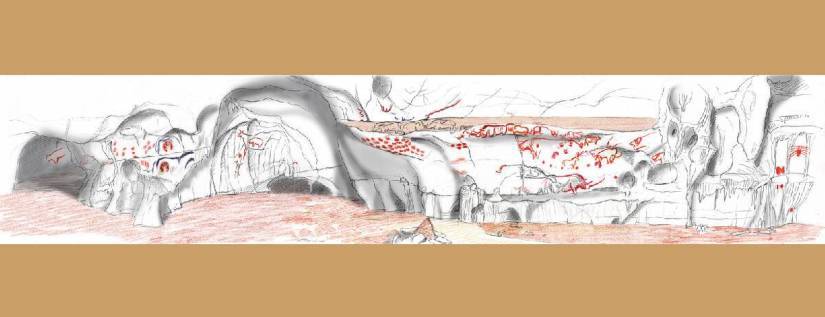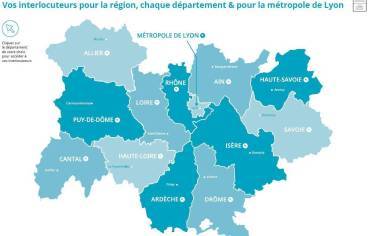Conservation de la grotte Chauvet-Pont d'Arc
Dès la découverte de la grotte Chauvet-Pont d'Arc, les mesures de conservation ont été mises en place...
Mis à jour le
La grotte Chauvet-Pont d’Arc a été découverte le 18 décembre 1994. Elle est protégée au titre des monuments historiques depuis le 22 juin 2014. Cette grotte extraordinaire est inscrite sur la liste du patrimoine mondial de l’Unesco.
Découvrez la grotte salle par salle grâce à la visite virtuelle
Dès après son expertise le 2 janvier 1995 par Jean Clottes qui l’authentifia comme l’un des lieux les plus anciennement fréquentés et ornés par l’Homme, l’État français se devait de mettre en sûreté la cavité, d’en préserver l’équilibre du climat interne et de pourvoir les aménagements qui permettraient de conduire la recherche.
La grotte Chauvet-Pont d’Arc fait l’objet depuis 1998 de recherches menées par une équipe pluridisciplinaire.
Celle-ci, comme toute activité conduite dans la grotte, est conditionnée par sa conservation : ceci constitue un préalable incontournable et propre à la grotte Chauvet, envié par les gestionnaires d’autres cavités.
En 2000, l’essentiel des mesures ayant été mises en place sous l’égide de la Direction Régionale des Affaires Culturelles Auvergne-Rhône-Alpes , le ministère de la Culture crée le service de la conservation de la grotte Chauvet afin de poursuivre la vérification et la préservation de l’équilibre interne.
Les missions principales de ce service :
- superviser le suivi climatologique et bactériologique réalisé par des laboratoires spécialisés ;
- de surveiller les travaux d’entretien et de maintenance de la grotte, extérieur et intérieur ;
- de veiller à la coordination de tous les acteurs qui pénètrent dans la grotte pour y effectuer des travaux de recherche, de maintenance, d'entretien, de reportages etc.)
- La prise de vues photographiques de secteurs susceptibles de se modifier (par exemple, parois parcourues par des eaux d’infiltration) est prise en charge par le service.
- Depuis son inscription au patrimoine mondial le 22 juin 2014 et l’ouverture en 2015 de la Grotte Chauvet2 (fac-similé sélectif de la grotte) générant un afflux de ses visiteurs dans la région, l’obligation de surveillance a progressé d’un cran.
- Parmi d’autres missions très importantes du service figure l’archivage des données relatives à la vie de la grotte, à son état et à toutes les activités qui s’y déroulent. Il est primordial de constituer l’archive de tous ces évènements : pour en conserver une trace, et pour pouvoir s’y référer en cas de besoin. Dans ce sens, le service s’attèle au développement d’un Système d’Informations Géographiques, véritable base de données géo référencées, qui s’appuiera sur un relevé complet
L’équipe du service de la Conservation de la grotte Chauvet
À des degrés divers, les agents du service ont tous pour mission essentielle d’assurer la sûreté de la grotte, la surveillance de son état sanitaire ainsi que la sécurité des personnes autorisées à pénétrer dans la cavité : accueil et encadrement des laboratoires en charge du suivi de l’équilibre du climat interne, des entreprises de maintenance et d’entretien de la cavité et de ses abords, de l’équipe de chercheurs, des media et des rares visiteurs.
L'équipe se compose de :
- d'une conservatrice, Marie-Blanche Potte, conservatrice de la grotte Chauvet, cheffe du service de la conservation de la grotte, conservateur régional adjoint des Monuments Historiques. DRAC Auvergne-Rhône-Alpes.
Son rôle consiste, pour l’essentiel, à initier et coordonner les actions de conservation de la grotte ainsi que des interventions en matière de travaux et d’entretien,en collaboration étroite avec le Service régional de l’archéologie (DRAC Auvergne-Rhône-Alpes) pour l’harmonisation des travaux de recherche avec la conservation de la grotte.
D’autres actions sont menées avec le Centre national de Préhistoire en vue de créer une archive accessible (réunion de fonds iconographiques).
Le Catalogue du fonds d'image de la grotte Chauvet est disponible auprès du CNP. En matière de valorisation, la cheffe de la Conservation assure la tenue de communications avec de larges publics dont celui des écoles et collèges, et développe avec la Grotte Chauvet2 des actions communes de communication. - d'assistants à la conservation
Outre leurs missions relevant de la sûreté et de la maintenance de la cavité, et de la sécurité des personnes, ils participent activement à valorisation de la grotte par la transmission des connaissances scientifiques dans le milieu scolaire et associatif.
Il sont tout particulièrement chargés de la mise en place et de l’alimentation du Système d’Informations Géographiques, du suivi des installations techniques et des prises de vue photographiques.. - d'un assistant en charge du suivi des grottes ornées de l’Ardèche . Sa première mission consiste à contrôler la sûreté et surveiller l’état sanitaire des grottes ornées de l’Ardèche méridionale. Il constitue ensuite un membre de l’équipe de la Conservation pour les missions relevant de la sûreté et de la maintenance de la cavité, et de la sécurité des personnes. Il participe également à la valorisation de la grotte par la transmission des connaissances scientifiques dans le milieu associatif.
Partager la page


